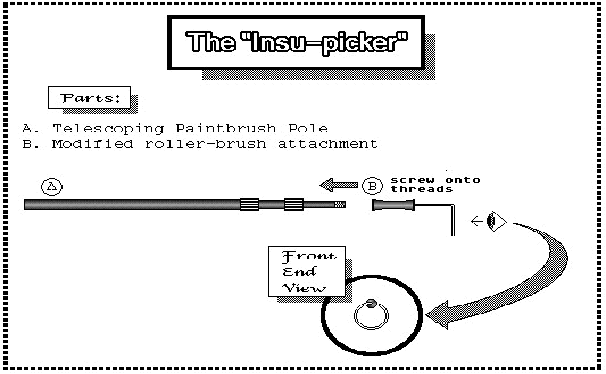
 |
Sample - Drip Points Newsletter |
This is a sample of the NIA quarterly newsletter -- This was the Spring 2000 issue
A NOTE FROM
THE EDITOR
The time for Drip Points has come again?
Already? I guess keeping a
busy schedule has the blessing of making time pass quickly by.
Pretty soon summer will be here and the opportunity to walk the tracks
will once again be a more prevalent part of my schedule (I hope!).
Speaking
of walking the tracks -- there are many people out there (especially those on
ICON) who have constructed a device for removing insulators from crossarms
without having to remove their feet from good old Terra Firma.
I would like to tell you about one such device that I have used.
But, of course, due to the day and age we live in, I will include a
disclaimer! This device, although
simple to construct and use has no endorsement from the NIA.
The NIA itself, and no one associated with the NIA can be held legally
responsible for any mishaps, etc. from the use/construction of this device.
You build, use, and place yourself in a position to use this device only
at your own risk!
When
I first decided to make my "Insu-picker" I went to Home Depot and
purchased a telescoping paint brush
handle that reaches up to 24 feet ($34.00).
I bought a cheap ($1.96) paint roller brush handle, and I also got a can
of liquid rubber which is used for coating tool handles simply by dipping them
into the substance.
I
removed the cylindrical 'roller' from the wire it was inserted onto; I used a
vise and a pair of pliers to bend an insulator-diameter-sized
loop in the wire that the roller was just removed from; and I then bent the loop
over at a 90 degree angle to the handle (take a look at the enclosed diagram for
a better idea of this concept). I
then poured the rubber coating liquid into a plastic, flat bowl and dipped the
loop into it. This rubber coating
on the loop is what enables the insulator
to be grasped by the loop.
Once you screw the handle onto the end of the telescoping pole you can stand at the base of a pole; extend the insu-picker's handle up to reach the jewel you wish to retrieve; place the loop over the top of the insulator; pull down over the top of the gem; and slowly unscrew it from its pin. Sometimes I have found I can use the outside of the loop to 'spin' the piece off when it sits on its pin even after I spin it far enough that it is no longer held by the threads. If you have a partner with you, you can push the bottom of the outer petticoat upward and let the gem fall (!!) into the waiting hands of your partner. However, I have also found I can pull my loop down over the top of the insulator right as I give it a final twist from its threads and then am able to lift it from its perch. This can be scary as you do not know if it will slip out of the loop as you slowly lower it to the ground, but I have used this method many times. I presently am working on a model with an attachment to clamp a hold of the insulator after I am done unscrewing it.
I
hope this helps any of you who may want an easy way to retrieve some gems from
their lofty perches. I always think
this design can be improved, so if you have some ideas, let me know.
You should see the plans for the one I was thinking about that has a
cordless drill at the top to aid in unscrewing!
Please
remember to support your local shows this summer. Personally, I think this is one of the most enjoyable parts
of the hobby. I hope to meet some
of you this summer at shows. I am
looking forward to Claude Wambold’s show June 10 in Perkiomonville, PA.
By the way, if you happen to be in Northwest, PA on June 24, please be
sure to stop up at our first local show co-sponsored by WRIC and GLASS.
And most importantly of all -- I hope to see you at the National!
Happy
collecting to all!
Lee Brewer, NIA #6695
Information Director
